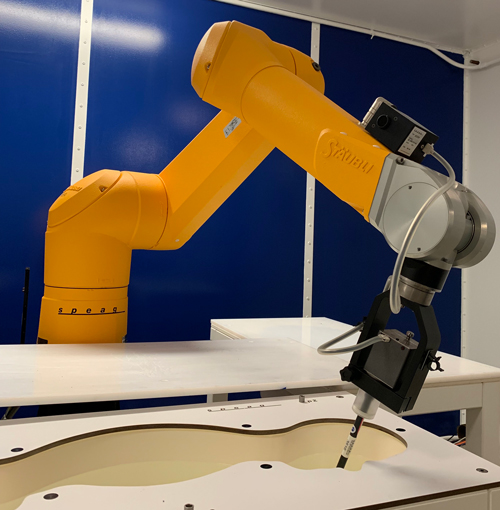Radio Frequency Exposure on Telecommunication Equipment

Specific Absorption Rate (SAR) vs. Maximum Permissible Exposure (MPE) Measurements
05 November 2019
 Studies have shown that excess exposure to non-ionizing radio frequency (RF) energy can cause damage to human tissue due to heat. Some of these studies have established a link between RF exposure and cancer. Indeed, the World Health Organization (WHO) now includes electromagnetic fields on their list of items that could possibly be carcinogenic to humans. When one considers how much time we spend around RF transmitters the logical question to ask would be is that safe?
Studies have shown that excess exposure to non-ionizing radio frequency (RF) energy can cause damage to human tissue due to heat. Some of these studies have established a link between RF exposure and cancer. Indeed, the World Health Organization (WHO) now includes electromagnetic fields on their list of items that could possibly be carcinogenic to humans. When one considers how much time we spend around RF transmitters the logical question to ask would be is that safe?
Indeed, many governments around the globe (including the US, Canada, and the EU) have standards in place to limit the amount of RF energy transmitters can produce, thus keeping RF exposure levels for the masses at an acceptable threshold. There are two main types of measurements required by these standards; Specific Absorption Rate (SAR) and Maximum Permissible Exposure (MPE).
 SAR measurements generally apply to portable devices that are used in close proximity to the human body (within 20cm). Measuring SAR involves mounting the device under test to a simplified Specific Anthropomorphic Mannequin (SAM) model of the human head (or torso), which is filled with tissue designed to simulate vital human organs. The transmitters onboard the device are activated, and the amount of RF energy absorbed by the tissue inside the phantom is measured and compared to the applicable limits in terms of W/kg. SAR limits are in place for general population as well as occupation/controlled exposure, and cover the frequency range from 100kHz – 6GHz (for the FCC).
SAR measurements generally apply to portable devices that are used in close proximity to the human body (within 20cm). Measuring SAR involves mounting the device under test to a simplified Specific Anthropomorphic Mannequin (SAM) model of the human head (or torso), which is filled with tissue designed to simulate vital human organs. The transmitters onboard the device are activated, and the amount of RF energy absorbed by the tissue inside the phantom is measured and compared to the applicable limits in terms of W/kg. SAR limits are in place for general population as well as occupation/controlled exposure, and cover the frequency range from 100kHz – 6GHz (for the FCC).
MPE measurements typically apply to mobile devices that are used at a distance greater than 20cm from the human body. MPE can only be accurately measured in the "far-field" region (greater than 2 wavelengths from the source), and the limits are in terms of W/m2. As with SAR, there are MPE limits in place for general population as well as occupation/controlled exposure. However, MPE limits extend up to 100GHz (for the FCC).
5G Revolution Implications
With the wireless world currently abuzz over fifth generation cellular technology (5G), it's worth noting that the higher frequency millimeter wave bands (24.25GHz – 52.6GHz) present a particularly difficult challenge with regard to measuring RF exposure. Portable devices which use these higher frequency bands cannot currently be measured for SAR with existing methodologies and limits (which stop at 6GHz for the FCC). MPE measurements and calculations can be performed but the accuracy of these is questionable with products which are used within 20cm of the body or in direct contact with the user's skin. For portable devices using the higher 5G bands, that leaves numerical simulation which has its own inherent limitations since it is difficult to accurately model complex real-world systems.
The 5G revolution promises exciting things for the future with insanely fast data rates delivered right to the palm of your hands. Intertek has been involved with the measurement of RF exposure and SAR for decades and will continue to be at the forefront as measurement methods and technologies adapt to the 5G future.

Bryan Taylor,
EMC Team Lead
Bryan is the EMC team lead at our Connectivity lab in Lexington, KY. During his 23 years with Intertek, Bryan has become an expert in many areas of mobile telecommunications equipment, including SAR testing, EMC, Radio Certifications, Medical EMC, Radio Equipment Directive, and product reviews. Bryan now supervises a large team of specialists and testers focused on securing network infrastructure, mobile and web applications, and connected products.


